[CZ][EN][DE]
PTT-Zpet k pramenum/ Back to the springs
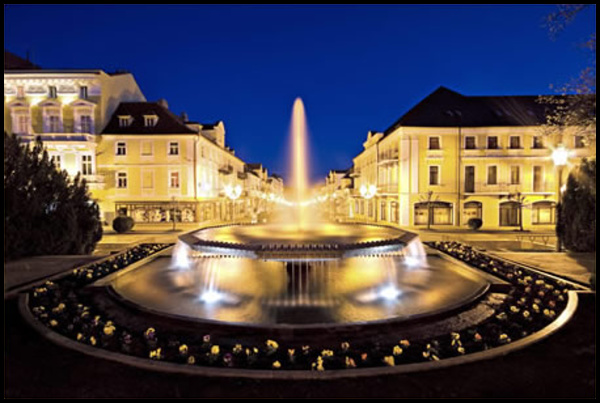
[CZ] Prestože nejsou prameny jako prameny, je tato cache venována tvurcum dokumentárního cyklu „Zpet k pramenum“, který lidem prináší neco víc než pouhé geografické informace. Dekujeme pánum Ludvíkovi, Munzarovi i celému štábu a pokud nekterý z nich naši skrýš osobne navštíví, budeme velmi pocteni.
[DE]Obwohl keine Quelle einer anderen gleicht, ist diese Cache dem Gestalter des Dokumentarzyklusses „Zurück zu den Quellen" gewidmet, der den Menschen etwas mehr bietet als nur reine geograpische Informationen. Besten Dank an die Herren Ludvík und Munzar und den ganzen Filmstab. Wenn jemand von Ihnen unsere Cache persönlich besuchen wird, werden wir uns sehr geehrt fühlen.
[EN]This cache is devoted to producers of documentary film „ Back to the springs“. The film bring more than mere geographical information, therefore we would like to thank Mr. Ludvík, Mr. Munzar and all the film staff. We will be pleased If some of them visit personally our cache.


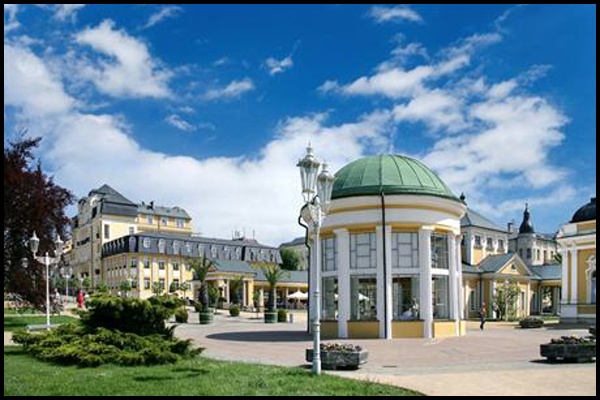

[CZ]Od dnešního dne má svojí cache i poslední bod západoceského lázenského trojúhelníku - Františkovy Lázne. Pri ne zrovna jednoduchém hledání Vám stejne jako autori již zmíneného poradu prejeme cistou mysl a nezkalený pramen.
[DE]Ab heute hat auch der letzte Punkt des westböhmischen Bäderdreiecks – Franzensbad –- eine eigene Cache. Bei der nicht einfachen Suche wünschen wir Ihnen sowie den Autoren des Dokumentarfilmes ein klaren Geist und eine reine Quelle.
[EN]Henceforth the city Františkovy Lázne – the last point of west bohemian spa triangle – has its own cache. In not half easy pursuance we wish you clear mind and undimmed spring together with producers of film mentioned above. http://img.geocaching.com/cache/21b348a1-aeb5-42e8-9f46-294b3c73cb68.jpg">
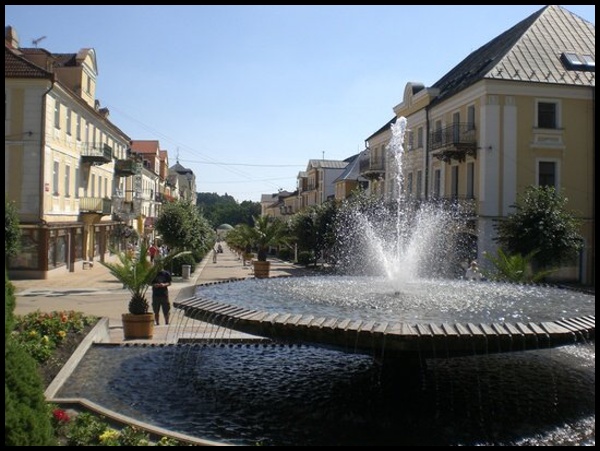
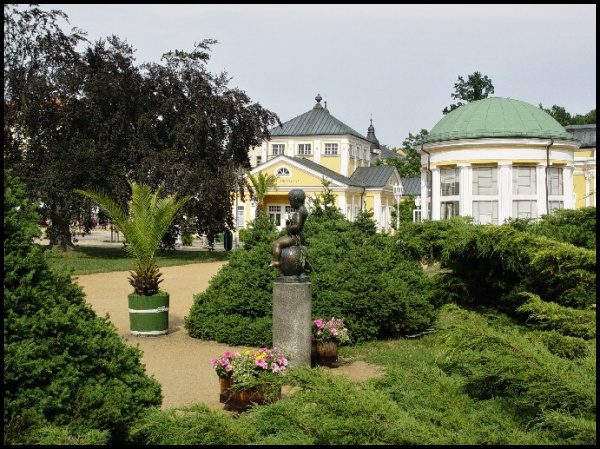


[CZ]Rozhodnutí o založení Vsi Císare Františka v roce 1793 zahájilo zcela nové období ve vývoji celého západoceského regionu. Vehlas Františkových Lázní, zdravého místa uprostred zelene se zázracnými lécebnými úcinky zdejších prírodních zdroju, pak velmi rychle preletel hranice Evropy a dosáhl až za oceán. Soucasný vývoj jeho slávu násobí. Dnešní Františkuv pramen, ve stredoveku nazývaný Chebská voda, Mestská nebo Slatinná kyselka, prinášel úlevu nemocným obyvatelum z okolí nejméne od pocátku 15. století, jak dosvedcuje nejstarší dochovaná písemnost. Další zmínka z roku 1617 pak dokládá šírící se proslulost zdejší minerální vody, nebot si ji nechala dovážet až do Prahy také císarovna Anna. Se založením mesta, a potažmo i se známou rebelií chebských žen, je tesne spjato jméno lékare Bernharda Adlera. Velice dobre si uvedomoval sílu lécivých úcinku, které kyselka obsahovala, a proto zarídil vycištení pramene. Kvuli jeho ochrane nad ním nechal vybudovat jednoduchý drevený pavilon, odkud vyvádel vodu rourami do jímky. Jenže chebské ženy to pochopily jako útok na své právo cerpat kyselku prímo od pramene a 18. srpna 1791 pavilon srovnaly se zemí. Rebelie dohnala doktora Adlera až za císarem Leopoldem II. do Prahy, který vyhovel jeho žádosti o nápravu. Vyslaná komise nejen vyrešila otázky hygieny pramene a jeho stácení, ale prišla i s návrhem na založení lázní. První plán nového mesta vytvoril abbé Tobiáš Gruber, lékar z Bíliny. Císar František I. je dekretem z 27. dubna 1793 schválil a Ves Císare Františka (Kaiser Franzensdorf, od roku 1807 Lázne Císare Františka - Kaiser Franzensbad) byla na svete. Ješte v tomtéž roce vyrostl pavilon Františkova pramene, Spolecenský dum a do konce roku 1794 dalších deset domu, vesmes kolem budoucí Národní trídy, vcetne dnešního komfortního hotelu Tri lilie (puvodne Loimann - Badehaus). V soucasnosti mají Františkovy Lázne 21 pramenu. Místní prírodní minerální voda má relativne vysoký obsah rozpušteného oxidu uhlicitého, jehož množství ponekud kolísá podle zdroje, rocního období a jiných vlivu. Prumerný obsah oxidu uhlicitého pri výveru pramenu je zhruba od 1,5 do 2,5 g na litr minerální vody, tj. asi 3/4 až 1 1/4 litru plynného oxidu uhlicitého rozpušteného v jednom litru vody. Cím vyšší je teplota vody, tím méne oxidu uhlicitého zustává rozpušteno a tím více ho uniká. Z lécebného hlediska je u vodních uhlicitých koupelí významné, že se pri nich kombinují úcinky ponorení, správné teploty koupele a oxidu uhlicitého vstrebaného do tela pacienta. Za minutu se pri celkové koupeli vstrebá asi 20-130 ml rozpušteného oxidu uhlicitého. Ten pak pusobí v podkožní tkáni mohutné rozšírení krevních vlásecnic. Dochází pritom k mírnému snížení krevního tlaku, ale predevším k poklesu nároku na práci srdce. Navíc se zmírnuje puls, zlepšuje se zásobování srdecního svalu krví a soucasne se snižuje spotreba kyslíku a živin v srdecním svalu pri poklesu srdecního zatížení. Zlepšuje se predávání kyslíku z krevního barviva do tkání. Klesá vnímavost telesného povrchu na chlad. Koupel pusobí relaxacne na svalovou soustavu i na autonomní nervovou soustavu. Dlouhodobé efekty po uhlicitých koupelích nastupují s urcitým casovým odstupem a pouze tehdy, pokud se koupele podávají po urcitou dobu pravidelne a opakovane. Spocívají predevším ve zlepšení výkonnosti srdecne cévního systému, v mírném poklesu hodnot krevního tlaku a pulsu, v poklesu aktivity chronických zánetlivých pochodu v organismu, a to i revmatických, ve zlepšení prokrvení tkání a vegetativním zklidnení. Pred prípravou koupele se voda pouze šetrným zpusobem ohreje na predepsanou teplotu.
[DE]Das Dekret über die Gründung von Kaiser Franzensdorf im Jahre 1793 eröffnete eine neue Epoche in der Entwicklung der ganzen Westböhmischen Region. Die Berühmtheit des Franzensbades, eines gesunden Ortes mitten im Grünen mit den wundervollen Heilwirkungen der hiesigen Naturquellen überschritt dann sehr schnell die Grenzen Europas und reichte bis über den Ozean. Die gegenwärtige Entwicklung erhöht seinen Ruhm noch mehr. Die heutige Franzensquelle, im Mittelalter als Egerwasser, Stadt- oder Moorsäuerling bekannt, brachte den kranken Bewohnern der Umgebung mindestens seit Anfang des 15. Jahrhunderts Linderung, was übrigens das älteste erhaltene Schriftstück belegt. Eine weitere Glosse aus dem Jahre 1617 bezeugt dann die sich verbreitende Berühmtheit des hiesigen Mineralwassers, denn auch die Kaiserin Anna ließ sich dieses bis nach Prag bringen. Mit der Gründung der Stadt und mit der bekannten Rebellion der Egerer Frauen ist der Name des Arztes Bernhard Adler eng verbunden. Er war sich der Kraft der heilenden Wirkungen des Säuerlings wohl bewusst und ordnete deshalb die Säuberung der Quelle an. Zu ihrem Schutz ließ er einen einfachen hölzernen Pavillon darüber errichten. Von hier aus führte er das Wasser mittels einer Rohrleitung in einen Auffangbehälter. Die Egerer Frauen sahen darin aber eine Verletzung ihres Rechts, den Säuerling direkt aus der Quelle zu schöpfen und machten den Pavillon dem Erdboden gleich. Der Aufruhr trieb Doktor Adler bis zum Kaiser Leopold II. nach Prag, welcher dann seinem Gesuch um Wiedergutmachung stattgab. Eine entsandte Kommission löste dann nicht nur Fragen zur Hygiene der Quelle und der Wasserentnahme, sondern sie schlug auch die Gründung eines Bades vor. Den ersten Plan einer neuen Stadt erarbeitete der Abt Tobias Gruber, der Arzt in Bílina war. Kaiser Franz I. hat den Plan durch Dekret vom 27. April 1793 genehmigt und Kaiser Franzensdorf, seit 1807 Kaiser Franzensbad, war geboren. Noch im selben Jahr wurde der Pavillon der Franzensquelle erbaut, das Gesellschaftshaus und bis Ende 1794 noch weitere zehn Häuser, die meisten in der künftigen Národní trída (Nationalstraße), einschließlich des heutigen Komforthotels Drei Lilien (ursprünglich Loimann-Badehaus). Zur Zeit hat Františkovy Lázne 21 Mineralquellen. Das hiesige natürliche Mineralwasser hat einen relativ hohen Gehalt an gelöstem Kohlendioxid, dessen Menge je nach Quelle, Jahreszeit und anderen Einflüssen etwas schwankt. Der Kohlendioxiddurchschnittsgehalt beträgt beim Ausfluss der Quellen etwa 1,5 bis 2,5 g pro 1 Liter Mineralwasser, das bedeutet etwa 3/4 bis 1 1/4 Liter Kohlendioxid gelöst in einem Liter Wasser. Je höher die Temperatur des Wassers ist, desto weniger Kohlendioxid bleibt gelöst und desto mehr davon entweicht. Vom Heilprinzip her ist bei Kohlendioxidbädern wichtig, dass dabei Wirkungen der Versenkung, der richtigen Temperatur des Bades und des in den Körper des Patienten absorbierten Kohlendioxids kombiniert werden. In einer Minute werden bei einem Ganzkörperbad etwa 20 - 130 ml gelöstes Kohlendioxid absorbiert. Das bewirkt dann in dem Unterhautgewebe eine umfangreiche Erweiterung der Kapillargefäße. Dabei wird der Blutdruck ein wenig gesenkt, vor allem aber wird das Herz nicht so beansprucht. Der Puls wird vermindert, es verbessert sich die Versorgung des Herzmuskels mit Blut und gleichzeitig wird der Sauerstoff- und Nährstoffverbrauch im Herzmuskel bei gleichzeitiger Senkung der Herzbelastung verringert. Es verbessert sich die Abgabe von Sauerstoff aus den roten Blutkörperchen in das Gewebe. Die Wahrnehmung von Kühle durch die Körperoberfläche wird gesenkt. Das Bad hat entspannende Wirkung auf die Muskulatur und auf das autonome Nervensystem. Langfristige Effekte nach Kohlendioxidbädern stellen sich erst nach einer gewissen Zeit ein und nur dann, wenn die Bäder eine gewisse Zeit lang regelmäßig und wiederholt gemacht werden. Sie bewirken insbesondere die Verbesserung der Leistung des Herzgefäßsystems, die Senkung der Blutdruck- und Pulswerte, die Hemmung chronischer Entzündungsprozesse im Organismus (auch der rheumatischen), die Verbesserung der Gewebedurchblutung und eine vegetative Beruhigung. Vor dem Bad wird das Wasser nur sehr behutsam auf die vorgeschriebene Temperatur erwärmt.
[EN]The decision to found “Ves Císare Františka” (Emperor František’s Village) in 1793 started a brand new area in the development of the whole West Bohemia region. The high reputation of Františkovy Lázne, as the health resort amidst greenery with miraculously curative effects of the local natural springs, was quick to cross European borders and reached across the ocean. The development of the present-day only reinforces its glory. The present day ”Františkuv pramen” (František’s Spring), known in the Middle Ages as the Cheb Waters, Municipal or Fen Bog acidulous waters, has been bringing relief to the sick of the local area since at least the 15th century, as documented by one old preserved document. Another mention from 1617 shows that the reputation of the local mineral water reached further afield, as Empress Anne had the mineral water delivered to Prague in that period. The name of Doctor Bernard Adler is closely connected with the foundation of the town and consequently with the notorious rebellion of the women of Cheb. The doctor was well aware of the healing power of the acidulous waters and therefore he ordered the spring to be cleaned. To protect it he had a simple wooden pavilion built over it leading the water out, via piping, into a tank. But the women of Cheb took this as an attack on their right to draw these waters straight from the spring and on 18 April 1791 they flattened the pavilion to the ground.The rebellion impelled Dr Adler to seek the help of Emperor Leopold II in Prague who granted the doctor’s request for the restoration of the pavilion. A committee was set up to solve the issue of the hygiene of the spring and the drawing of the waters, and it also came up with the proposal to establish a spa town here. The first plan for the new spa town was created by the clergyman Tobiáš Gruber, who was a doctor in Bílina. Emperor František I. approved the foundation of the spa down in a decree of 27 April 1793 and “Ves Císare Františka” or “Kaiser Franzensdorf” (Emperor František’s Village), known since 1807 as “Lázne Františka Josefa”, or “Kaiser Franzensbad” (František Josef’s Spa) came into existence. In the same year the pavilion for František’s Spring and a Community Centre were constructed and by the end of 1749 ten more buildings came into being, mostly around the future Národní trída street, including the highly comfortable, present day hotel Trí lilie (originally the “Loimann Badehaus”). Presently has františkovy Lázne 21 healing springs. The local natural mineral water has a relatively high content of dissolved carbon dioxide; its volume varies slightly depending on the source, the season of the year and other conditions. The average content of carbon dioxide at the mouth of the springs is roughly 1.5 to 2.5 g per litre of mineral water, i.e. about 3/4 to 1 1/4 l of gaseous carbon dioxide dissolved in one litre of water. The higher the water temperature, the less carbon dioxide remains dissolved and the more escapes. In terms of curative effects, it is important for the water carbonic baths to combine the effects of the immersion, the right water temperature and the carbon dioxide absorbed into the patient’s body. In a minute of a full body bath approximately 20 – 130 ml of dissolved carbon dioxide gets absorbed into the body. This amount then causes a massive expansion of blood capillaries in the hypodermic tissue. This causes a mild decrease of blood pressure, but in particular it decreases the work rate of the heart. What’s more, the pulse calms down and the blood supply to the heart improves, at the same time during the decrease of stress on the heart the supply of oxygen and nutrients to it improves. The transmission of oxygen from haemoglobin to the tissue is also improved. The body surface is less sensitive to cold. The bath has relaxing effects on the muscle system and the autonomous nerve system. The long term effects after carbonic baths are felt over a period of time and only if the baths are taken repeatedly on a regular basis. The effects are shown in the better performance of the cardiovascular system, in the mild decrease of blood pressure in the pulse, in the lower occurence of chronic inflammatory processes in the body, and also in terms of rheumatics, and in the improved blood circulation in tissues and the vegetative stabilisation. The water is gently heated to the required temperature before the patient takes a bath.

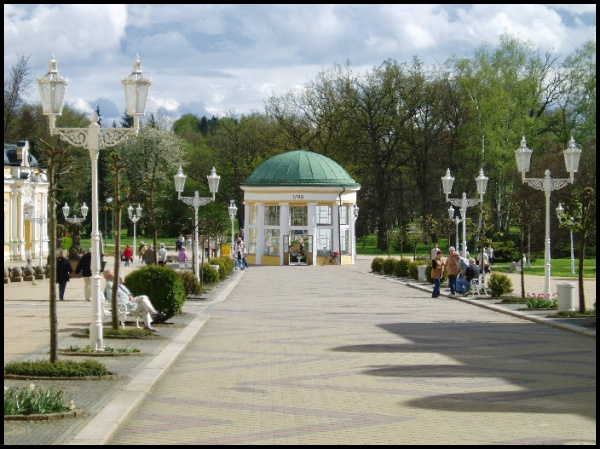

A=
[pocet obyvatel Fr. Lázní (v tis., zaokrouhlete dolu!)/wieviel Einwohner hat Franzensbad (in Tausenden, nach unten runden!)/ how many citizens has Františkovy Lázne (in thousands, round down!)]-[rok založení Fr. Lázní/Franzensbad Gründungsjahr/year of Františkovy Lázne foundation]-3207+4
B=
[CZ]Císlo B tvorí pocet pramenu vyobrazených na mestském znaku mesta Františkovy Lázne.
[DE]Nummer B schafft die Anzahl der Quellen die auf dem Franzensbader Stadtwappen abgebildet sind.
[EN]The number B forms the quantity of springs displayed in the town heraldry.

Final
N 50° 07.33*A-7 E 012° 21.A*B*30-340


Pocet navstevniku:
Hodnoceni cache prosim kliknete- 


[CZ]svanyr-irgri h cbzavxh.[EN]Svany-Oenapu.[DE]Svany-Mjrvt.